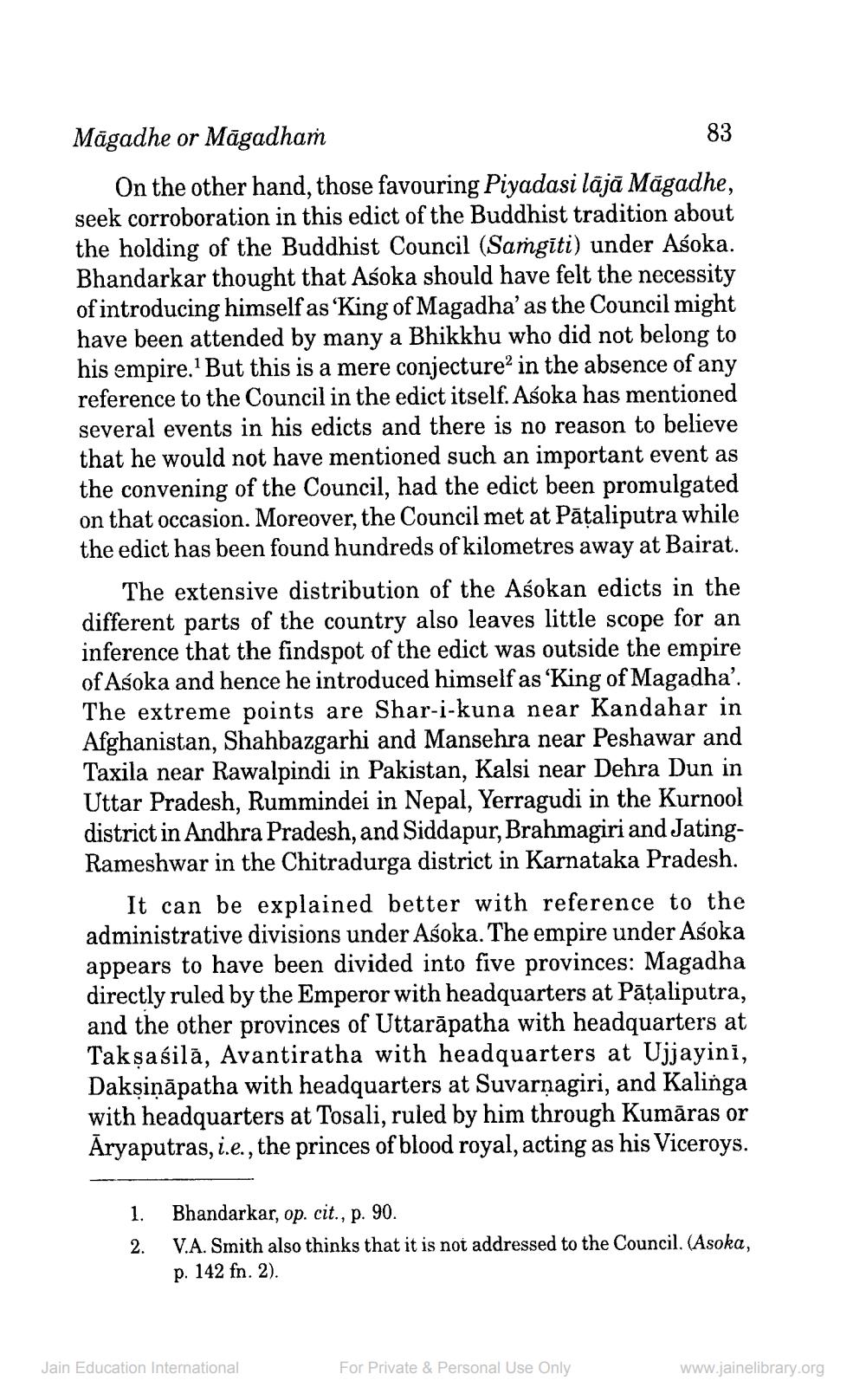________________
Māgadhe or Māgadań
On the other hand, those favouring Piyadasi lājā Māgadhe, seek corroboration in this edict of the Buddhist tradition about the holding of the Buddhist Council (Saṁgiti) under Asoka. Bhandarkar thought that Asoka should have felt the necessity of introducing himself as 'King of Magadha' as the Council might have been attended by many a Bhikkhu who did not belong to his empire." But this is a mere conjecture” in the absence of any reference to the Council in the edict itself. Asoka has mentioned several events in his edicts and there is no reason to believe that he would not have mentioned such an important event as the convening of the Council, had the edict been promulgated on that occasion. Moreover, the Council met at Pātaliputra while the edict has been found hundreds of kilometres away at Bairat.
The extensive distribution of the Asokan edicts in the different parts of the country also leaves little scope for an inference that the findspot of the edict was outside the empire of Asoka and hence he introduced himself as 'King of Magadha'. The extreme points are Shar-i-kuna near Kandahar in Afghanistan, Shahbazgarhi and Mansehra near Peshawar and Taxila near Rawalpindi in Pakistan, Kalsi near Dehra Dun in Uttar Pradesh, Rummindei in Nepal, Yerragudi in the Kurnool district in Andhra Pradesh, and Şiddapur, Brahmagiri and JatingRameshwar in the Chitradurga district in Karnataka Pradesh.
It can be explained better with reference to the administrative divisions under Asoka. The empire under Asoka appears to have been divided into five provinces: Magadha directly ruled by the Emperor with headquarters at Pāțaliputra, and the other provinces of Uttarāpatha with headquarters at Takşaśilā, Avantiratha with headquarters at Ujjayini, Dakşiņāpatha with headquarters at Suvarnagiri, and Kalinga with headquarters at Tosali, ruled by him through Kumāras or Āryaputras, i.e., the princes of blood royal, acting as his Viceroys.
1. 2.
Bhandarkar, op. cit., p. 90. V.A. Smith also thinks that it is not addressed to the Council. (Asoka, p. 142 fn. 2).
Jain Education International
For Private & Personal Use Only
www.jainelibrary.org




